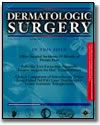The Efficacy of External Ultrasound-Assisted Liposuction

Dermatologic Surgery
2000 Abstract
0004-329 Lawrence
Lawrence N, Cox SE.
The efficacy of external ultrasound-assisted liposuction: a randomized
controlled trial. Dermatol Surg. 2000 Apr;26(4):329-32. PMID: 10759819
Division of Dermatologic Surgery, Cooper Hospital University Health System,
Marlton, New Jersey, USA.
BACKGROUND:
Use of high-intensity, high-frequency external ultrasound before
liposuction has been reported to enhance the ease of fat extraction, increase
the amount of fat extracted, and decrease patient discomfort during liposuction.
OBJECTIVE: The purpose of this study was to compare the effect of application of
high-intensity continuous wave ultrasound to extremely low-intensity ultrasound
(placebo) prior to tumescent liposuction.
METHODS:
A total of 19 patients (25
sites) completed the double-blind study. We used a split treatment area design
so that each patient could serve as their own control. After tumesing the
treatment area, a 3 W/cm2 continuous wave 1 MHz ultrasound was applied for 10
minutes. The placebo control was treated with 0.3 W/cm2 1 MHz for 10 minutes.
Traditional tumescent liposuction followed ultrasound application. Doctors
completed a visual analog scale rating the following: rate of extraction, degree
of resistance to cannula movement, and color of fat. Patients also completed a
questionnaire after the procedure and at 1 month postoperatively. Histologic
samples of the fat treated with external ultrasound were taken from two
patients.
RESULTS:
In 14 of 19 patients the doctors graded either no difference
between treatment and control sides or found a better response on the nontreated
side in rate of fat removal and resistance to cannula advancement giving a P
value of .0096. Only 5 of 19 aspirates were graded as differing in redness
between treatment and control sides. Four of these were more red on the control
side and one was more red on the treatment side. Therefore 15 of 19 had no
better result with treatment, giving a P value of .0022. Seven patients graded
the sensation during suctioning and/or postoperative course as better on the
control side, four graded these variables as better on the treatment side, four
showed no difference between the two sides, and four had mixed results. This
gives only 4 of the 19 patients showing any advantage in treatment with a P
value of .0022.
CONCLUSION:
When the placebo effect is eliminated, there is no
advantage to the application of external ultrasound prior to liposuction.
Publication Types:
Clinical Trial
Randomized Controlled Trial
